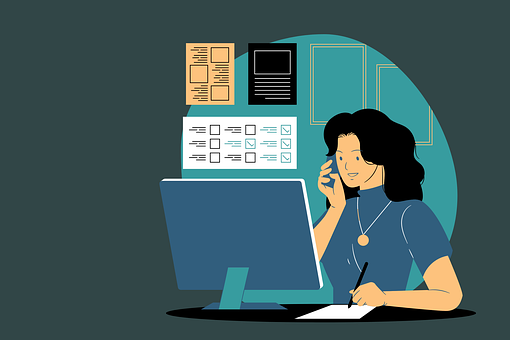In the Virtual Office space, the digital gap is now more about skills and mindset than about access to devices and the internet. Many seasoned professionals have only a basic understanding of email, web searching, and Microsoft Office. When things go wrong, they instead rely heavily on close coworkers or the IT support. In the virtual office, young people, on the other hand, have already established a competitive advantage. They have a better understanding of digital technology and are more willing to fix problems using YouTube tutorials, social media, and subreddits.
They’re also more serious gamers as a group. Being familiar with massively multiplayer online games (MMOs) like Fortnite and Roblox, as well as the ability to manage multiple digital identities, will sharpen that edge even further as more work takes place in virtual reality (VR) – and one does not have to share Mark Zuckerberg’s somewhat eccentric vision of the virtual workspace he articulated at the 2021 Connect Conference to believe that it will. The virtual workspace is currently in the early stages of development. Virtual reality has long been used to train people for physically demanding tasks, from astronauts and pilots to law enforcement, surgery, and manufacturing.
The Role Virtual Office Play in Improving Communication
During the pandemic, most people used Slack, Teams, and Miro to work remotely. There’s definitely space for improvement. Collaboration between coworkers suffers when they work remotely, according to academic studies. Communication is being hampered as email and Slack exchanges are increasingly replacing real-time in-person talks. Google has stated that ideas like Street View and Gmail were born out of casual conversations around coffee machines and lunch tables on their campus. This type of serendipitous interaction, however, is almost non-existent with remote working.
Remote working does, of course, come with a cost in terms of personal well-being. According to Stanford researchers, “Zoom fatigue” is caused by a mix of strong eye contact, limitation of mobility, self-consciousness about one’s own video stream, and the cognitive demands of giving exaggerated input to express understanding, agreement, or worry. Solutions to these remote working issues are becoming possible thanks to technological advancements. Collaboration software like Meta’s Horizon Workrooms and Microsoft Mesh, which allow coworkers to meet as avatars in virtual reality or participate in a real-world meeting as a photo-realistic hologram, is now available.
Companies will undoubtedly create persistent VR working settings in which employees may engage in real time as embodied avatars in the virtual workspace. Virtual reality simulations of workplace locations can be created to stimulate chance meetings and corridor conversations. Consider what it would be like to leave a conference room and cross a lively virtual atrium to get from one remote meeting to the next. That may seem far-fetched, but consider that Zigbang, a Korean PropTech firm, has already opened Metapolis, a 30-story VR office. Employees pick an avatar and use elevators and corridors to go to their desks. Their webcam and microphone are activated when they meet a colleague’s avatar, allowing them to converse.
Meanwhile, the capacity to read and respond to body language, as well as actively participate in group conversations by scribbling post-it notes or sketching on a virtual whiteboard, should make virtual meetings more engaging and less sedentary. They need a lot more active neck, shoulder, arm, and hand movement than an usual hour on Zoom.
As the virtual office evolves, it appears that a new set of workplace rules will emerge. Team games, such as virtual bowling evenings and ping-pong competitions, may eventually supersede Zoom cocktails as the default remote working social event. Meanwhile, VR may have significant advantages when it comes to hiring. Women’s presence in symphony orchestras has been found to grow dramatically after “blind” auditions. As a result, interviewing as an avatar could reduce the impact of implicit or explicit bias against persons based on their gender, age, or appearance.
People may seek to express their personal brand within the constraints of professional dress codes for avatars, just as custom “skins” (outfits) are a feature of many MMOs. In the virtual world of work, there may well be a demand for creativity in virtual fashion and accessories as well. On the Roblox MMO platform, Gucci has already sold virtual headgear, handbags, and sunglasses. The job market disruption produced by COVID has had the greatest impact on young people. While some struggled to work productively from their parents’ or shared houses, others were duped into joining companies that did not exist. Despite this, the epidemic has provided fascinating peeks into the future of remote working. The latter is here to stay because of public health issues and climate change. It will continue to bring competencies concentrated among younger individuals to the fore as it evolves into the virtual workspace.



